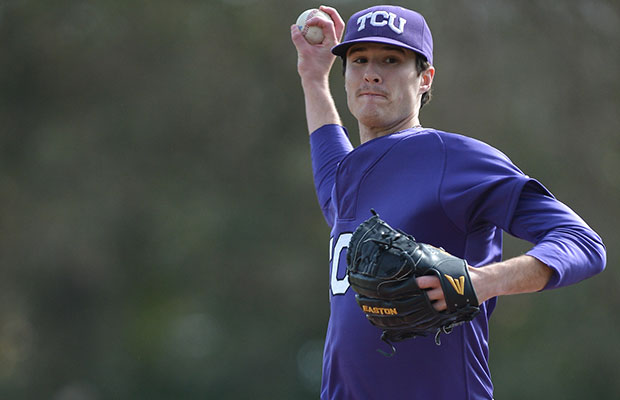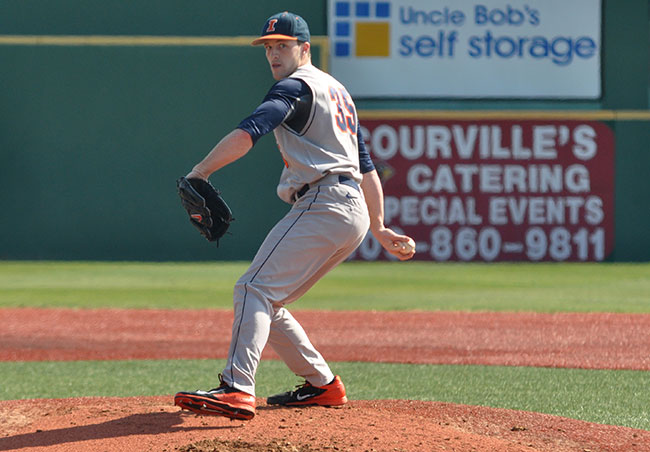 After covering the five biggest voids to fill in SEC and ACC baseball last week, it’s time now to talk a little bit about the Big 12.
After covering the five biggest voids to fill in SEC and ACC baseball last week, it’s time now to talk a little bit about the Big 12.
The 2015 season was tough on the Big 12. TCU and Oklahoma State had great seasons, but outside of those two, it was tough sledding. Still, several teams are left with production to fill heading into 2016. The following are the five largest voids.
Michael Freeman- Oklahoma State
Freeman proved to be a steadying force in an OSU rotation that needed one. Other than Jon Perrin (who was 6-4 with a 4.06 ERA), no other pitcher started more than six games. So it was a huge boon to the staff that they knew what they were going to get from Freeman just about every time out.
The big lefty was 10-3 with a 1.31 ERA on the season, and perhaps more impressively, between his first start of the season against Arizona State and his last start of the year against Arkansas in the regionals, he allowed no more than two earned runs in any given start. Not bad for someone who started just one game in 2014.
Finding an ace the quality of Freeman is a nearly impossible task, but if nothing else, OSU can take solace in the fact that no one really expected such a stellar season out of Freeman last year either.
One top-shelf arm to watch for the Cowboys is Remey Reed, who was a swingman on last year’s staff. In 23 appearances, including 5 starts, he had a 1.57 ERA.
Basically the Entire TCU Staff
The TCU staff last season was pretty much unfair to the rest of the Big 12. After all, they boasted guys like Preston Morrison (12-3, 2.51), Alex Young (9-3, 2.22), Tyler Alexander (6-3, 3.07), Riley Ferrell (2.56, 14 SV), and Trey Teakell (1.35). That group led the Horned Frogs to Omaha in both 2014 and 2015.
But in 2016, every last one of those guys will be gone. The good news, though, is that Mitchell Traver has chosen to return to Ft. Worth rather than enter pro ball as the Cardinals’ 28th-round pick. Last season, he went 9-2 and had a 1.89 ERA, which was the best among the team’s starting pitchers.
He’ll be a familiar face who will bridge the gap from this last class of elite pitchers to TCU’s next group of elite arms, which will likely be led freshman Luken Baker. Barring a surprise, the big righty will be in the Horned Frogs rotation from day one, and he looks the part of the program’s next ace.
Dominic Moreno- Texas Tech
Moreno was never really a marquee name outside of Lubbock, and you could even argue that at no point during his career at Texas Tech was he the best pitcher on the staff. But over the course of his three seasons there, he was as durable and versatile as they come.
As a sophomore in 2013 (after transferring from Howard College), Moreno was 3-4 with a 3.86 ERA and tallied 54 strikeouts in 60.2 innings pitched on a team that struggled to get quality starts behind staff ace Trey Masek. He wasn’t the most dominant pitcher in that season, but he was steady in a season where the Red Raiders craved steady performances. In 2014, he became something of a swingman for the Raiders, a role he took to nicely. In 22 games (8 starts), he had a 3.14 ERA and even notched a couple of saves along the way.
Then, as a senior, he took on more of a full-time role at the back end of the bullpen, while still giving head coach Tim Tadlock multiple innings of work more often than not, and he flourished. In 58.1 innings spread across 24 appearances, he had a 1.85 ERA and a 73/19 K/BB ratio, to go along with 7 saves.
Tech’s talent is getting better with each passing year, so they will find pitchers who can simply replace Moreno’s talent, but it’s tough, no matter how talented your staff is, to find someone who can take on so many varied roles, as he did.
Ben Johnson- Texas
It’s no secret that poor offensive production was an issue for the Longhorns in 2015, but Ben Johnson can’t be blamed for any of that.
All he did was lead all UT regulars in batting average, on-base percentage, slugging percentage, hits, total bases, triples, stolen bases, and he was tied for the team lead in runs scored. For good measure, he also led the team in getting hit by pitches. Additionally, he was second on the team in doubles and was tied for second in RBI.
Do-everything players like Ben Johnson don’t come along all the time, even at places like Texas. They’ll be leaning heavily on guys like Tres Barrera, Zane Gurwitz, Bret Boswell, and Michael Cantu to try to replace the production.
Oklahoma’s Offensive Core
What a strange season it was for the Sooners. They got solid pitching from the likes of Jake Elliott, Alec Hansen, Robert Tasin, and Jacob Evans. They also had an offense capable of putting up runs in bunches, and yet, they missed the postseason in 2015. Now, in 2016, they will be without much of that offensive core.
Anthony Hermelyn (.321/6/49), Craig Aikin (.340), Kolbey Carpenter (.360/8/37), and Taylor Alspaugh (.308) have all departed. For those keeping score at home, that’s all four of the OU regulars who hit over .300, four of the team’s five RBI leaders, and the team’s two top home run hitters.
With Hansen and Elliott back in the fold for 2016, the starting rotation is already more or less set, but how far OU goes in 2016 will largely depend on how quickly they find bats to replace those departed middle-of-the-order hitters.



